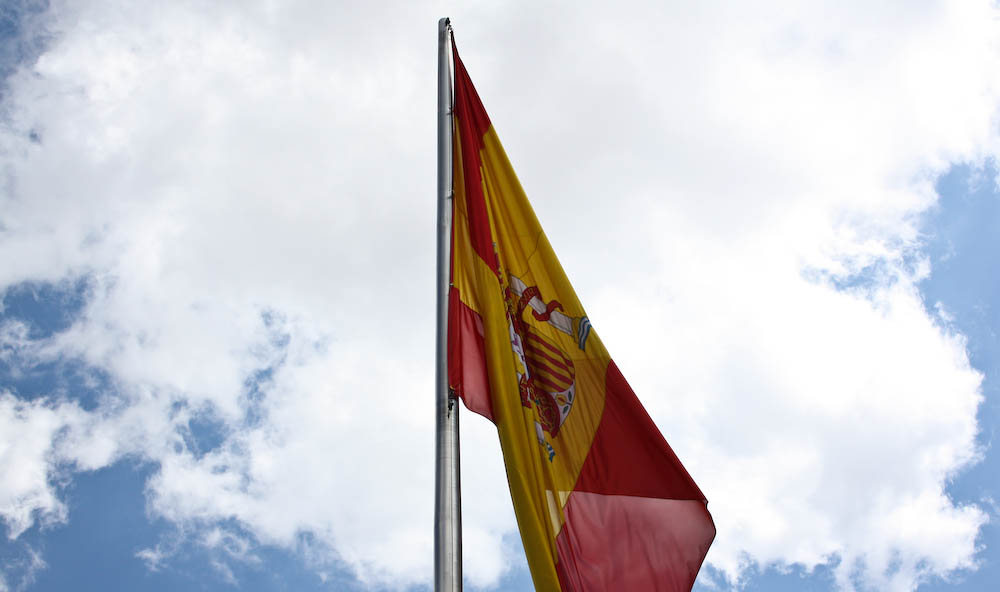Spanish Prime Minister Mariano Roy and French Prime Minister Manuel Valls on Friday inaugurated the new electrical interconnection between the two Mediterranean countries.
The electricity line is a symbol of engineering triumph and a significant step towards the integration of Europe's energy markets and the spread of renewable energy.
Costing about 700 million, the new 64.5 kilometer-long line began construction in 2008 and connects the towns of Santa Llogaia, near Figueras in Gerona, Spain, with the town of Baixas, near Perpignan, France. The lines route is entirely underground, running through a concrete trench, apart from the stretch that crosses the Pyrenees which passes through an 8.5-kilometer tunnel that runs parallel to the high speed train line.
Of the projects total 700 million budget, the European Union provided 225 million and the European Investment Bank a loan of 350 million.
The interconnection between Spain and France will follow a testing period and will come into commercial operation in June, doubling the electricity exchange between the two countries.
Pioneering project transforming Europe
From an engineering point of view, the project represents a global success as it is the first time that an underground interconnection of this length and with a power capacity of 2 GW has been carried out. In addition, a new type of cable — manufactured by Prysmian — for the transmission in direct current of voltage levels of 320 kV has been developed. The technology applied to the converter stations built by Siemens at each end of the line allows them to reverse the direction of flow of the energy exchanges between Spain and France in just 50 milliseconds. This is a strength that enables specifically the use of intermittent renewable power.
Popular content
From a policy point of view, this is a milestone project that builds on the EU's three internal energy market core principles: security of supply of electricity in Europe, combating climate change and applying market rules and competitiveness, which emphasize the EUs strongest integration driver, the single market.
Expanding on this, Dominique Maillard, chairman of France's transmission system operator Réseau de Transport d'Électricité (RTE), said at the inauguration ceremony that this engineering work “is more than just a line, as it is a contribution towards the construction of European electricity intelligence, which will enable the transmission of safer, cheaper and cleaner electricity throughout Europe.”
New line boosts Spanish renewables
Numerous studies have found that grid flexibility is crucial to enable further integration of renewable energy sources in Europe. While the European Commission — the main driver of the EU's internal energy market — also understands the necessity of expanding the grid interconnection between EU countries, it often has to struggle against the heavy-handed involvement of member states governments.
Ironically, one characteristic example is the dispute between Madrid and Paris. Spain has often accused France of reluctance in building grid lines interconnecting the two countries as an attempt to safeguard its domestic nuclear energy incumbents. The dispute intensified in October, when at the EU energy summit Spain and Portugal pushed for a binding obligation for member states to make 15% of their national generation capacity available to other EU nations. Instead, EU leaders renewed their 2002 commitment to increase energy trading through electricity connectors to 10% by 2020.
The inauguration of the new electricity line between Spain and France is a step in the right direction. Specifically, Spain is in dire need of new interconnections that allow it to export its surplus energy resulting from the overcapacity of its electrical system and low domestic power demand. According to Spanish stakeholders speaking to pv magazine, recent claims that the country is planning to install 1.37 GW of new PV and 2.511 GW of new CSP capacities by 2020 remain conditional and subject to the country solving its huge overcapacity problem.
This content is protected by copyright and may not be reused. If you want to cooperate with us and would like to reuse some of our content, please contact: editors@pv-magazine.com.


By submitting this form you agree to pv magazine using your data for the purposes of publishing your comment.
Your personal data will only be disclosed or otherwise transmitted to third parties for the purposes of spam filtering or if this is necessary for technical maintenance of the website. Any other transfer to third parties will not take place unless this is justified on the basis of applicable data protection regulations or if pv magazine is legally obliged to do so.
You may revoke this consent at any time with effect for the future, in which case your personal data will be deleted immediately. Otherwise, your data will be deleted if pv magazine has processed your request or the purpose of data storage is fulfilled.
Further information on data privacy can be found in our Data Protection Policy.